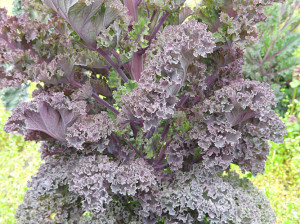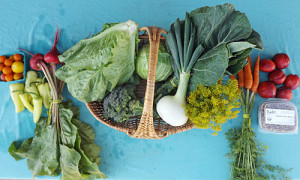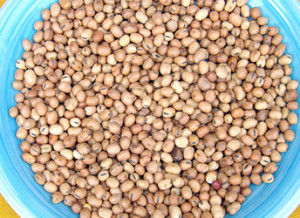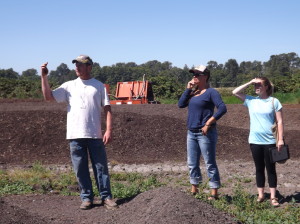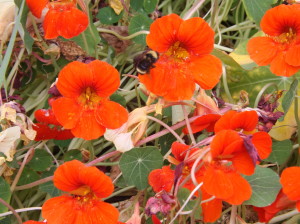The Origin of Nash’s Red Kale
Farmers have been developing new crop varieties for thousands of years. An excellent example of this ancient agricultural tradition is how Nash Huber developed the red kale that is in your box this week.
Back in 1990, Nash planted 3 acres of a kale variety called Vates, a green kale with frilly leaves. He noticed 2 bright purple plants in the middle of the sea of green. They were “sports,” or plants that had randomly mutated on their own. Realizing he could encourage this purple color, Nash dug up the 2 plants and isolated them in his home garden. He surrounded them with 10 Brussels sprouts plants so they would pollinate each other, because he also wanted eventually to achieve a kale plant with the height of the Brussels sprouts and with leaves that could be harvested from lower to upper levels as the plant grew. This would make it easier to harvest, and the farm could get several bunches of kale per plant, making it more profitable. “That was a lot to ask,” Nash says. “But I thought I may as well go for it!”
Some of the offspring of the kale sport/Brussels sprout cross showed these characteristics. But it took many seasons of planting and cross-pollinating, before Nash and his team were able to consistently get kale with the desired traits. However, about 5% of the plants continued to be green instead of purple. With the help of Dr. John Navazio of Organic Seed Alliance in Port Townsend, they were able to greatly reduce the number of plants manifesting the green color. This year the farm was finally able to sell seed to other farmers, relatively confident that they would get the crop they were expecting.
Nash’s Red Kale also has a bonus benefit—cold-hardiness. It can reliably survive in temperatures down into the teens and has become a mainstay winter kale.
This is NOT “genetic modification” as in GMOs created by Monsanto. Nash only influenced how those original sports were pollinated. He did not forcibly inject the genetic material from one completely different species into another in a laboratory as biotech companies do. He used the classical seed breeding methods that farmers have safely used throughout the history of agriculture.

